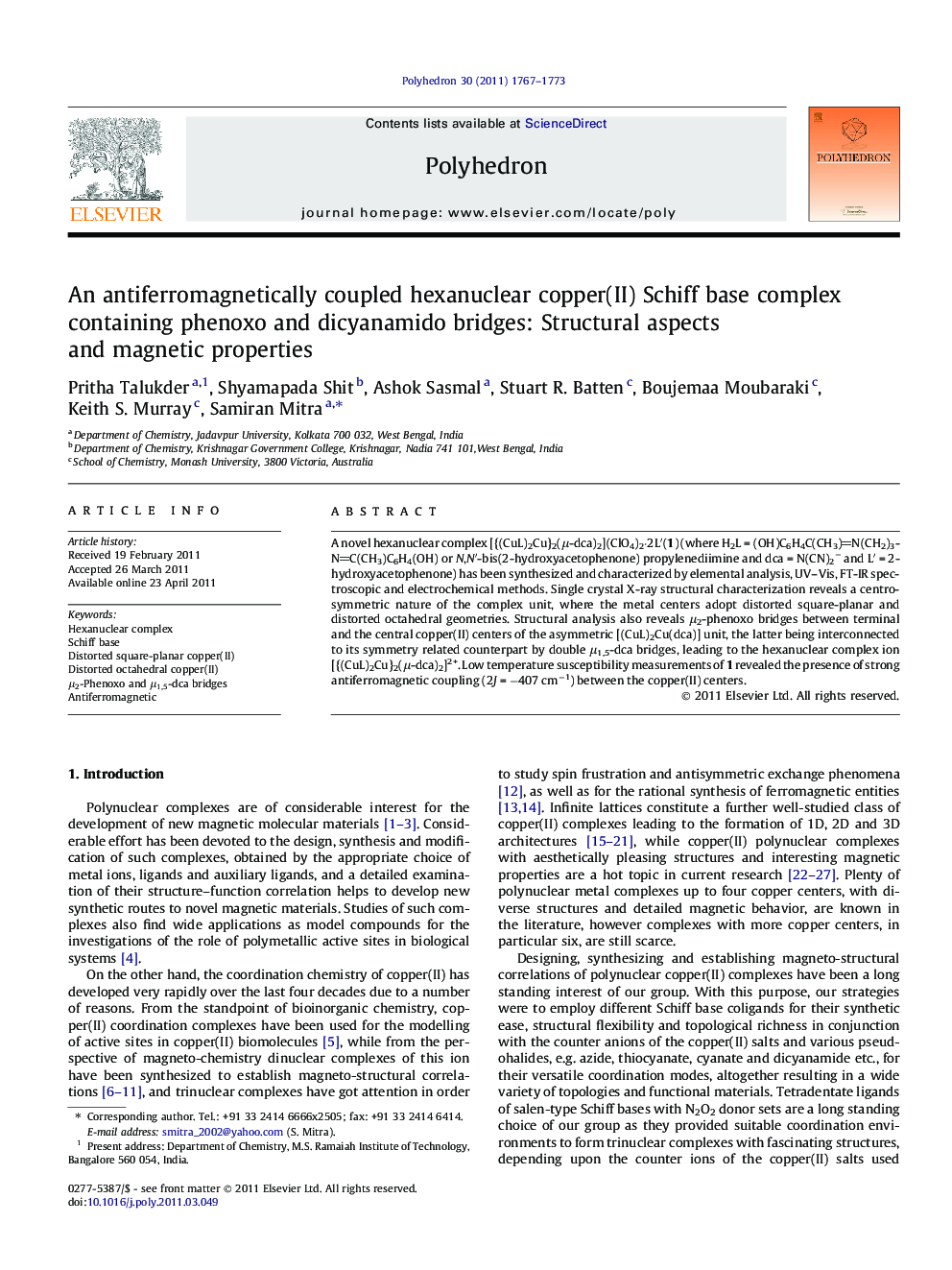| کد مقاله | کد نشریه | سال انتشار | مقاله انگلیسی | نسخه تمام متن |
|---|---|---|---|---|
| 1336073 | 979567 | 2011 | 7 صفحه PDF | دانلود رایگان |

A novel hexanuclear complex [{(CuL)2Cu}2(μ-dca)2](ClO4)2·2L′(1) (where H2L = (OH)C6H4C(CH3)N(CH2)3NC(CH3)C6H4(OH) or N,N′-bis(2-hydroxyacetophenone) propylenediimine and dca = N(CN)2− and L′ = 2-hydroxyacetophenone) has been synthesized and characterized by elemental analysis, UV–Vis, FT-IR spectroscopic and electrochemical methods. Single crystal X-ray structural characterization reveals a centrosymmetric nature of the complex unit, where the metal centers adopt distorted square-planar and distorted octahedral geometries. Structural analysis also reveals μ2-phenoxo bridges between terminal and the central copper(II) centers of the asymmetric [(CuL)2Cu(dca)] unit, the latter being interconnected to its symmetry related counterpart by double μ1,5-dca bridges, leading to the hexanuclear complex ion [{(CuL)2Cu}2(μ-dca)2]2+. Low temperature susceptibility measurements of 1 revealed the presence of strong antiferromagnetic coupling (2J = −407 cm−1) between the copper(II) centers.
The bridging behavior of dicyanamide is explored to synthesize a novel hexanuclear copper(II) complex in the presence of a tetradentate symmetrical Schiff base ligand, competent to form tri-/tetranuclear complexes. Structural analysis reveals two different coordination environments as well as geometries (distorted square-planar and distorted octahedral) for the copper(II) centers within the trimetallic asymmetric unit of the complex ion. The strong antiferromagnetic behavior (2J = −407 cm−1) of the complex is fitted with the pair of independent triangles model based on phenoxo bridges between copper(II) centers, whilst bridging dicyanamides play only a structural role by stabilizing the hexameric complex ion.Figure optionsDownload as PowerPoint slideHighlights
► A novel hexanuclear copper(II) complex is derived from a Schiff base and dicyanamide.
► It is characterized structurally as well as by different physicochemical methods.
► Two different geometries and coordination environments are found for the copper(II) centers.
► Doubly μ1,5-bridging dicyanamides play a key role to increase the nuclearity.
► The strong antiferromagnetic nature is fitted with pair of independent triangles model.
Journal: Polyhedron - Volume 30, Issue 11, 21 June 2011, Pages 1767–1773